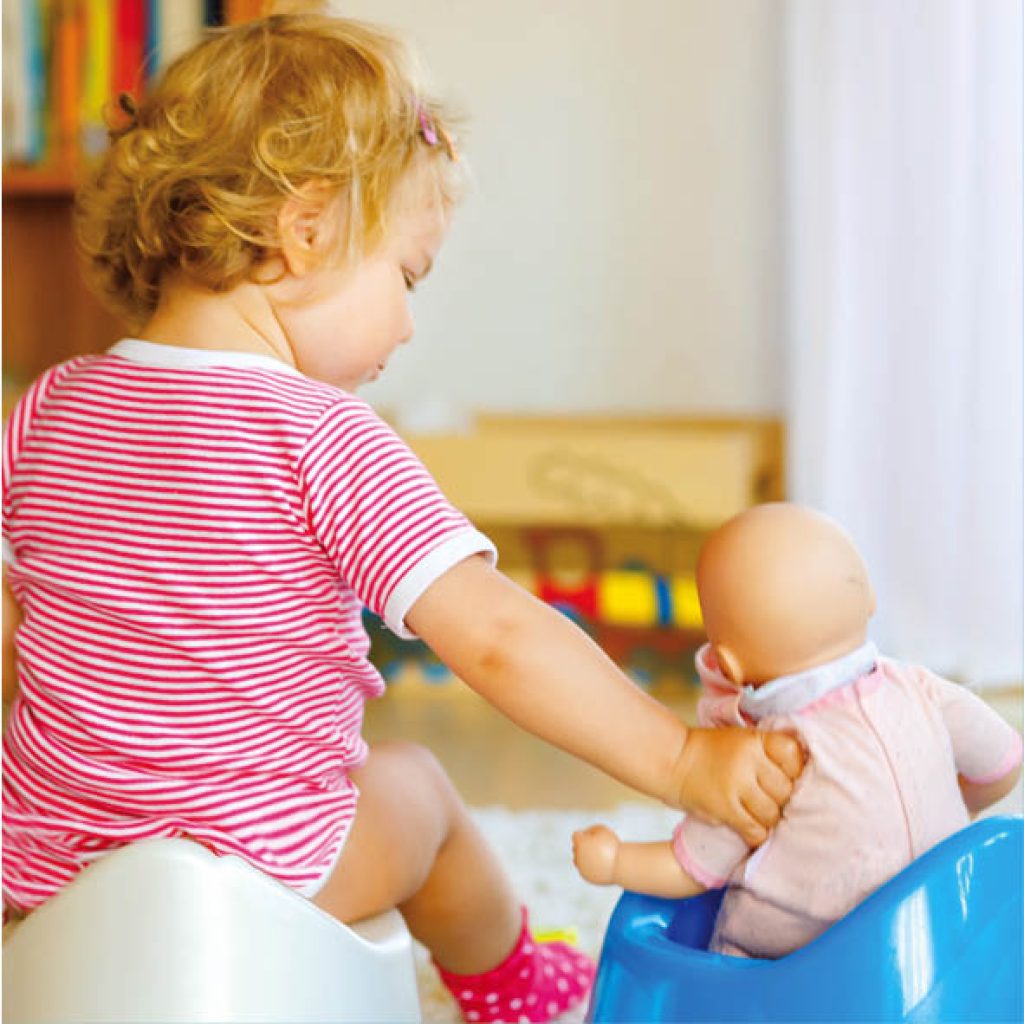Potty training is a significant milestone in a child’s life, and it can be a source of anxiety for both parents and children. However, it doesn’t have to be a stressful time. Here are our top tips for potty training your little one!

Don’t start until your child is ready
The first step in potty training is to recognise your child’s readiness cues. Every child is unique, and there is no fixed age at which they should start potty training but generally speaking children are ready between about 24 and 30 months old. They need to be both emotionally and physiologically ready and this doesn’t always happen in sync!
Physiological Readiness Signals for Potty Training
– Child’s awareness of the need to go – demonstrated by squatting, grunting, going red in the face or sometimes hiding.
– No night time bowel movements.
– Dry nappy for long periods of time.
– Urinating a lot at one time vs little and often through the day.
– Some regularity of bowel movements.
Emotional Growth and Social Awareness Readiness Signals for Potty Training
– An understanding of what the potty/toilet is for
– Wanting to do it and having an “I can do it” attitude
– A desire for parental approval
– A desire to be like others
Starting when your child is both emotionally and physiologically ready will give you the most positive experience possible.
[Info from the NHS]
Create a Safe and Comfortable Environment
Make the bathroom a safe and comfortable space for your child.
Use child-friendly potty training equipment like a small potty chair or a step stool for the regular toilet.
If you have carpets or rugs you don’t want to be ruined put down mats to protect them.
Open and Honest Communication
Explain the process to your child using language they can understand, so they know exactly what is happening and why.
Encourage them to ask questions and express their feelings.
Let them know it’s okay to make mistakes, and you’re there to support them.
Demonstrate and Involve
Children often learn by imitation. Show your child how to use the potty and involve them in the process.
If you’re a closed-door family now might be the time to invite your child into the bathroom with you so they can see you go and learn from you.
Let them flush the toilet, pull down their pants, or empty their training potty into the big toilet. This hands-on approach can empower your child and make them feel more in control.
Expect accidents
Accidents are par for the course, it doesn’t mean you’re failing at this; they are a learning opportunity for your child. Never get cross with a child or shame them for having an accident. It’s not their fault. Help them to understand how their body felt before the accident happened so they can try to avoid it next time.
Be Patient
Each child will be different when it comes to potty training. Don’t expect too much too soon. Don’t make any big plans for the first few days and if possible stay home for at least the first two days so your child can get used to being without their nappy. Try not to get frustrated as your child may pick up on this and they may feel anxious. Setbacks are a part of the process and they will get there!
Try to be consistent
If you believe your child is physiologically and emotionally ready be consistent with your approach. Don’t put them back in nappies because you have a long car journey or they’re in someone else’s house. Once they’re off leave them off or it could be confusing for your child.
If your child is at nursery or being looked after by someone else ensure they are doing the same as you to keep that consistency when they are away from you too.
Leave the nights for now
Don’t try to potty train your child at night when you are potty training during the day. There are additional physiological changes that need to occur before a child will be dry at night (including the secretion of a hormone that controls night-time urinal output). Children are usually dry at night around 6-12 months after they have become dry during the day but it can sometimes be a lot longer. It’s not something you can teach them, you just have to wait for their body to be ready.
Be patient with your child, offer lots of love support and encouragement and remember they all get there in the end, some children take longer than others and that’s okay.
A book that some of us Daisy trainers have found helpful is ‘Oh Crap’ by Jamie Glowacki. You can pick up a copy here.
Other books and methods are available so do your research, pick one that works for you and stick to it.
Good luck!!
